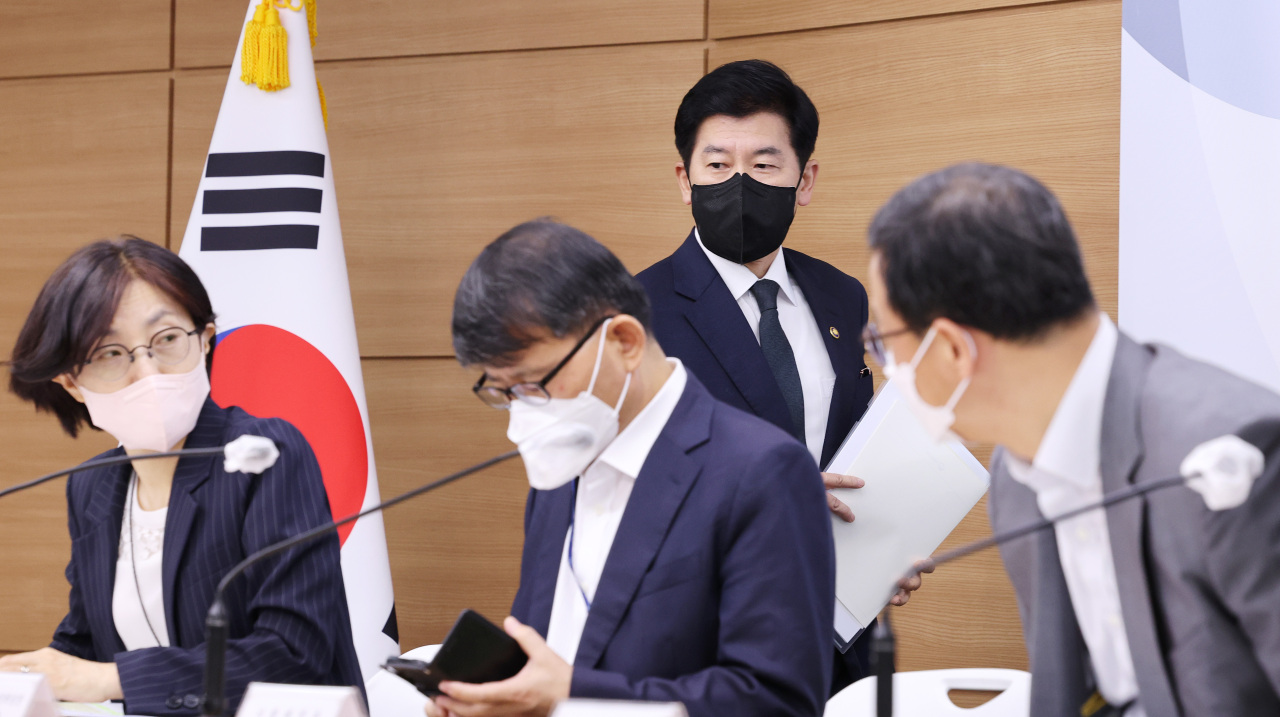 |
Officials speak at the 2022 National Fiscal Strategy Meeting held Thursday. (Yonhap) |
Some 3.6 trillion won ($2.8 billion) earmarked in the Education Ministry budget for early childhood, elementary and secondary education will be reallocated for higher and lifelong education, such as nurturing semiconductor talent, the ministry said Thursday.
The revamped education subsidy plans were put forward “in consideration of the changing education environment,” the ministry said in a statement.
The extra budget will be used to strengthen research and training at universities, offer lifelong education and support universities outside of Seoul, the ministry said, adding that nurturing future talent for the semiconductor industry is one of the main tasks of the reform.
The education authority has been rushing to step up efforts to nurture next-generation talent for the semiconductor industry after President Yoon Suk-yeol called for special measures to boost the industry last month.
The 3.6 trillion won that is to be redistributed for nurturing semiconductor experts is part of a 68.9 trillion won budget for early childhood, elementary and secondary education. Another 12.2 trillion won has been designated for higher and lifelong education in 2022.
“The level of investment for higher education is relatively low compared to the OECD average,” an official from the ministry said. “We should put much more resources into higher education to strengthen the nation’s competitiveness.”
The reallocated funds will also be used “to ease the limit on the university student quota for departments related to high-tech fields” in response to Yoon’s earlier remarks that the quota made it difficult for institutions to train a sufficient number of graduates in the semiconductor industry.
It also promised to support universities to nurture talents to meet the demand of industries and the community.
The ministry further added that while the local education subsidy has increased almost four times over the past 20 years, the school-age population -- those between ages 6 and 17 -- has decreased by 34 percent, resulting in an imbalance between the support for early childhood, elementary, secondary education and higher, lifelong education.
“We have talked about the reform plan with the heads of education offices, though not in detail,” said Choi Ki-hyuk, head of the ministry’s Local Education Finance Division. Local education offices are in charge of running the budget for local education subsidies.
“Though there can be opposition, the plan has been somewhat discussed with education offices,” he said.
However, education office chiefs said the ministry did not discuss the budget reallocation with them.
The National Council of Governors of Education, a committee representing regional education offices across Korea, opposed the reallocation plan, arguing the budget for higher education should be drawn up separately.
“The reallocation measure goes against the Local Education Subsidy Act which aims to secure a budget for early education,” the statement read. “The financial authorities should reconsider today’s rushed decision which will bring the degradation of early education, and restart the discussion for the future.”
The Korea Federation of Teachers Association also issued a statement Thursday, criticizing the decision.
“To reallocate the subsidy without explanation on why the budget for education should decrease when the number of students goes down is to give up on the improvement of the early education environment,” the statement read.
“We cannot ensure the health and safety of children from infectious diseases, let alone providing them with individualized education targeted at each one’s need or guarantee a certain level of basic scholastic ability.”
By Im Eun-byel (
silverstar@heraldcorp.com)








